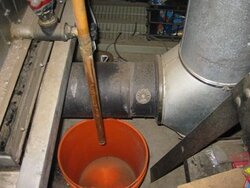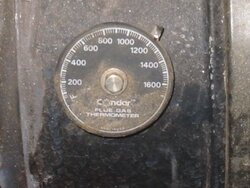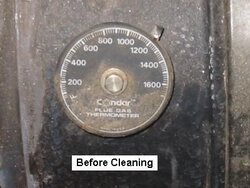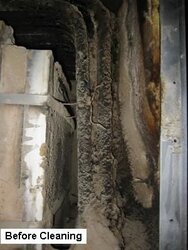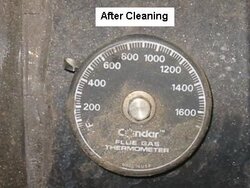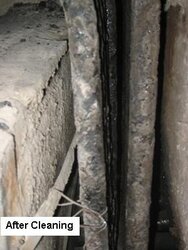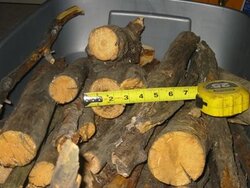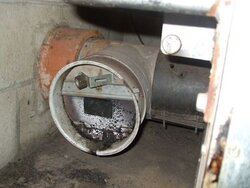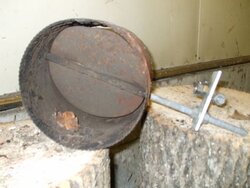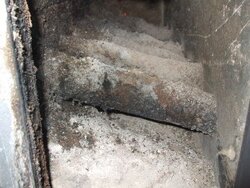Okay - nofossil has a four minute startup for his EKO https://www.hearth.com/econtent/index.php/forums/viewthread/27273/
Does anyone have a forty minute or less minimal smoke startup method for a Seton/Greenwood boiler?
From a cold start, I seem to have as much smoke as a neighbor's outside wood boiler for about 20-30 minutes with stack temperatures constant at 1100F (small pine).
After 30 minutes or the first couple of cycles, the Seton goes pretty much smoke free with stack temperatures around 700F.
So, yes - I am going to cut up the side panel and clean the HX tubes and do an "Anthony special" modification to reduce stack temperatures.
But - the main question - how to minimize smoke from the Seton/Greenwood configuration???
Larger heat load seems good but the main issue seems to be getting the refractory up to temperature.
Are all/any Seton/Greenwood owners using return temperature protection (e.g. a Termovar)?
Thanks,
Steve
Does anyone have a forty minute or less minimal smoke startup method for a Seton/Greenwood boiler?
From a cold start, I seem to have as much smoke as a neighbor's outside wood boiler for about 20-30 minutes with stack temperatures constant at 1100F (small pine).
After 30 minutes or the first couple of cycles, the Seton goes pretty much smoke free with stack temperatures around 700F.
So, yes - I am going to cut up the side panel and clean the HX tubes and do an "Anthony special" modification to reduce stack temperatures.
But - the main question - how to minimize smoke from the Seton/Greenwood configuration???
Larger heat load seems good but the main issue seems to be getting the refractory up to temperature.
Are all/any Seton/Greenwood owners using return temperature protection (e.g. a Termovar)?
Thanks,
Steve



